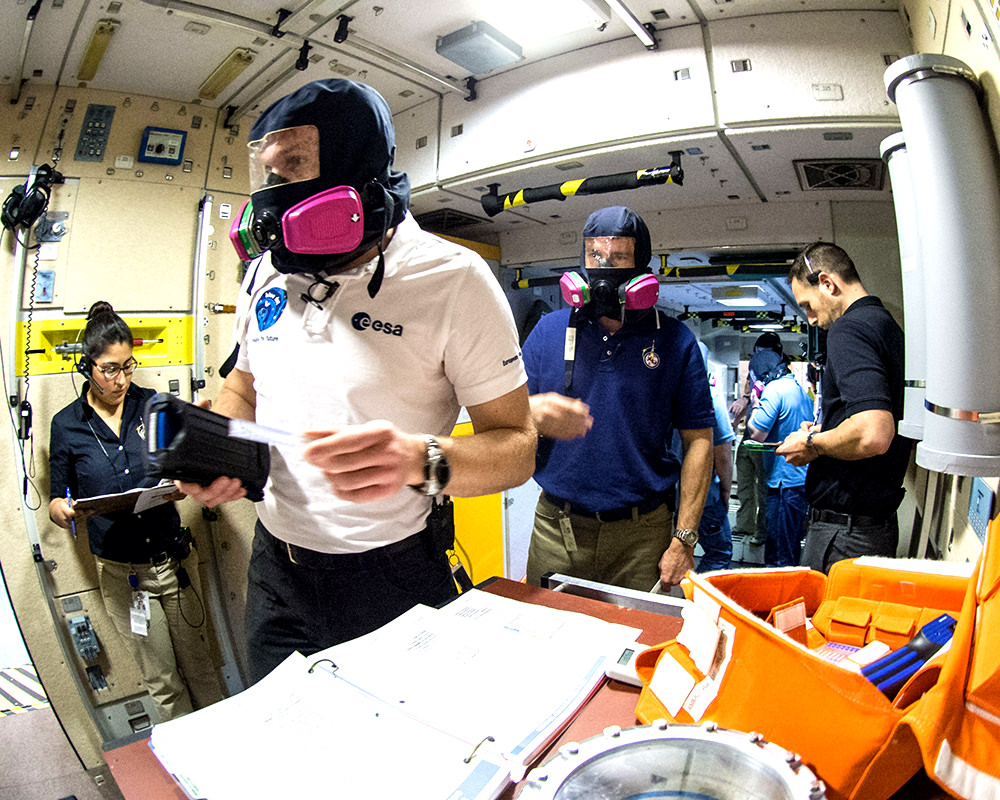Facing a fire in space? It’s among the most catastrophic situations possible, according to NASA, so the agency spends a lot of time thinking of what to do. Here’s what you do with NASA training: Don a mask, grab an emergency book, and head quickly but calmly to the nearest control post to plot an attack.
This is presumably what is happening in the recent picture above, where Alexander Gerst (from the European Space Agency, on the left) and NASA’s Reid Wiseman are doing a fire drill on the ground.
Astronauts practice emergency procedures so often that their first instinct is to go to the procedures, Gerst said in a previous Universe Today interview. “They sink in and become a memorized response or a natural reaction,” he said in August. And in his case, Gerst has training from a previous career that would come in handy if a fire broke out on the International Space Station.
Gerst was a volunteer firefighter when he was attending school, and although Expedition 40/41 this year will be his first spaceflight, he’s well-used to extreme environments: he also has done science in Antarctica, where researchers are essentially responsible for themselves for months at a time.
NASA strives to make the fire training as real as possible to keep astronauts on their toes, including creative combinations of smoke machines. Gerst said the agency won’t go to extremes, however: “We don’t light our modules on fire,” he said.
Check out more about emergency training in this past Universe Today article, which also explains the difference between fighting a fire on the space station and dealing with one in a Soyuz spacecraft. Gerst and Reid (both rookie astronauts) and Russian astronaut Maxim Suraev (who was on Expeditions 21 and 22) are supposed to head into space in May.


In micro gravity fire is devastating.
So why not abandon the ISS to instead build a centrifugal space station which immediately solves this and many many other unnecessary microgravity problems?
Because microgravity research is pretty much the point of having a space station. Perhaps in the future there will be fractional-gravity spinning stations so we’ll find out the health effects of, say, living at 1/3G for extended periods. Of course, if you want 1/6G, you can plunk the habitat down on the moon.